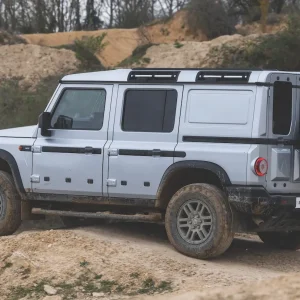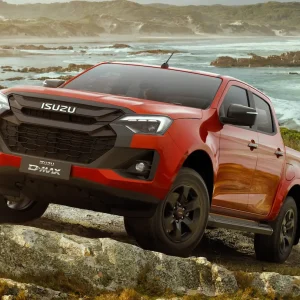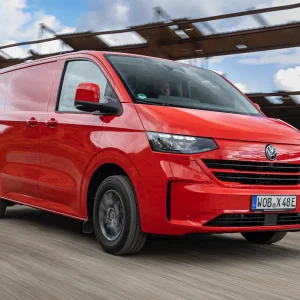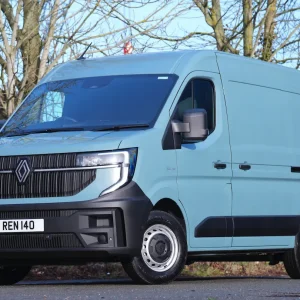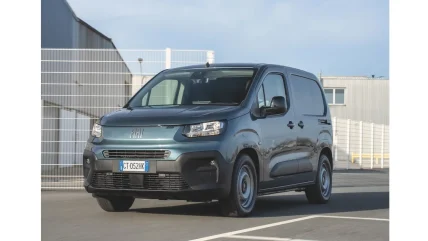
Platform sharing is nothing new in the LCV sector: Ford and Volkswagen currently have a product-sharing agreement and the Nissan-Renault alliance has expanded to take in Mitsubishi. PSA Peugeot/Citroen and Fiat, meanwhile, started making large vans together under the Sevel Sud deal back in the early 1990s.
The Stellantis group of manufacturers, however, has taken product commonality to a new level and now encompasses the former PSA brands Peugeot and Citroen, Fiat Professional and Opel/Vauxhall.
In an unprecedented initiative it has just renewed the compact, medium and large vans across all of these LCV brands. Both diesel and electric versions are included in the Stellantis Pro One product drive, but, with an eye on the future, the emphasis is on the plug-in vans, an area of the market where Stellantis believes it is ahead of the curve.
UK product manager Brad Miller says EVs accounted for 11% of Stellantis sales last year, which already puts the group ahead of the government’s 10% target for 2024.
While Stellantis is keen to emphasise the unique characteristics each brand brings to the party – such as Citroen’s comfortable seats, Fiat Professional’s storage solutions, Opel/Vauxhall’s Matrix headlights and Peugeot’s sophisticated i-Cockpit, for example – in truth the similarities between the vans in each sector are more apparent than the differences.
We got to drive a new Stellantis van in each of the market sectors, starting with compact…
Fiat Professional e Doblo
Like its stablemates, the little electric Fiat gets a 50kWh battery that provides a maximum claimed range of 205 miles. An 80% battery recharge can be completed in 30 minutes, according to Stellantis. Power comes from an electric motor producing 136hp and 270Nm of torque. You can choose between three driving modes – Eco, Normal and Power – giving access to 60%, 80% and 100% of available battery energy, and three levels of regenerative braking retardation.
With a part-load of 250kg in the load bed, performance was reasonable in all three modes but impressively zippy when Power was selected, although staying for long in this mode would inevitably reduce the overall range, so it’s advisable to use it sparingly – when driving uphill with a heavy load on board, for example.
The e Doblo handles well too – its neat, sporty steering wheel, which can be adjusted for height and reach, adds to the sense of fun when driving. By choosing the strongest setting for regenerative braking, which is easily managed via the paddle controls on the steering wheel, one-foot driving can be accomplished safely on most urban or extra-urban routes. The strongest retardation setting on the e Doblo is effective without becoming over harsh, which, together with the quiet, smooth ride, enhances the van’s relaxing drive.
A particularly impressive feature to improve manoeuvrability and safety while on inner-city missions is the Magic Mirror, which is located in the position usually taken by the rear-view mirror in passenger cars or vans with glazed rear windows. By using cameras affixed to the side and rear of the van the Magic Mirror gives the driver a clear view both behind and to the side of the vehicle and also eliminates blind spots.
All the Stellantis compact electric vans are available with an ePTO (electric power take-off) facility (Fiat is threatening to dub this the ‘Magic Plug’) to provide power for electric tools and all are equipped with a generous complement of ADAS, including Lane Keep Assist, Tyre Pressure Monitoring System and High Beam Assist.
The e Doblo is offered with two or three seats – we drove the latter in which the middle seat back folds down to make a table/work surface.
Two trim levels are up for grabs: Doblo and Primo. Both get a pair of USB sockets, DAB radio and Bluetooth and the Primo adds the multimedia Navi Pro infotainment system with a 10in touchscreen and functionality for Apple CarPlay and Android Auto. The digital cluster in Primo is also endowed with a 10in display.
Fiat Professional e Doblo L2 Primo
Price (ex VAT inc PiVG) £29,255
Payload 709kg
Load volume 3.8m3
Powertrain 100kW electric motor 136hp
Range 205mls
Verdict: An accomplished compact van with top-notch performance
Overall rating: 9/10
Vauxhall Vivaro Electric
For our medium van we chose the new Vauxhall Vivaro Electric, limited production of which is set to start at the Luton plant in 2025 alongside Stellantis’s other mid-sized electric vans. Both ICE Vivaro and Vivaro Electric come in two trim levels: Prime and Pro. Both get Opel/Vauxhall’s stylish Visor fascia, which integrates the headlights and the centrally mounted Vauxhall badge.
The Vivaro Electric comes in two lengths – 4.98m and 5.33m – and as a panel van, crew van and platform-chassis. Its max range of 217 miles on the WLTP cycle with a 75kWh battery is an increase of 12 miles over the outgoing model. A 50kWh battery gives a range of 139 miles. A 100kW/136hp electric motor with 260Nm torque provides the power.
As on the compact electric vans, three levels of regenerative braking can be chosen from steering wheel-mounted paddle shifters and another commonality is the ePTO (electric power take-off) unit to power auxiliary equipment or fridge units from the traction battery.
The Vivaro Electric gets a 10in touchscreen with wireless smartphone mirroring and Vauxhall Connect. Infotainment can also be operated through voice recognition and steering wheel-mounted controls. Key driving information is displayed in a 10in digital instrument cluster.
Standard safety features include rear parking sensors, intelligent speed assistance, lane keep assist and driver attention alert. Pro trim adds the excellent Dynamic Surround View, which includes a digital rear-view mirror and passenger side camera, blind spot detection, flank guard detection of fixed obstacles, a 180º rear parking camera and front and rear parking sensors.
Vauxhall Vivaro Electric Pro
Price (ex VAT inc PiVG) £40,480
Payload 1001kg
Load volume 5.3m3
Powertrain 100kW electric motor 136hp
Range 217mls
Verdict: A refined and well-equipped medium electric van
Overall rating: 8/10
Peugeot e-Boxer
With a claimed range of up to 261 miles from a 110kWh battery, a payload of up to 1.5t and 13.0m3 to 17.0m3 load volumes, the e-Boxer looks like a decent proposition for large van operators making the transition to electrification. It comes in two lengths and as a single- and double-cab chassis as well as panel van mode.
Available in just Professional trim, the e-Boxer’s redesigned nose features a new bumper and new body-coloured grille. Other exterior changes include restyled wing mirrors, LED headlights and redesigned rear lights. Like the rest of the Peugeot line-up it gets the brand’s new shield emblem. The revamped interior includes a new, sportier steering wheel, new dashboard, although the plastic remains scratchy-looking, and new seat fabrics and door panels. A 10in touchscreen houses Apple CarPlay, Android Auto and satnav.
Performance is lively thanks to a potent electric motor that develops 270hp and 400Nm torque. There are three driving modes and four levels of regenerative braking that can be juggled to suit a variety of driving environments. The strongest retardation setting means you rarely have to resort to using the footbrake but is considerably harsher than the strongest settings in the medium and compact vans.
Connectivity comes via the fabled Peugeot iCockpit, which now integrates the ChatGPT AI tool that drivers can access through the OK Peugeot voice assistant.
Safety aids include driver tiredness warning, traffic sign recognition, lane keep assist, AEB with pedestrian and cyclist detection, smart speed limiter, and adaptive cruise control with stop and go.
Peugeot e-Boxer L4H2
Price (ex VAT inc PiVG) £46,105
Payload 665kg
Load volume 15.0m3
Powertrain 200kW electric motor 270hp
Range 261mls
Verdict: A versatile and practical electric load-lugger
Overall rating: 8/10

